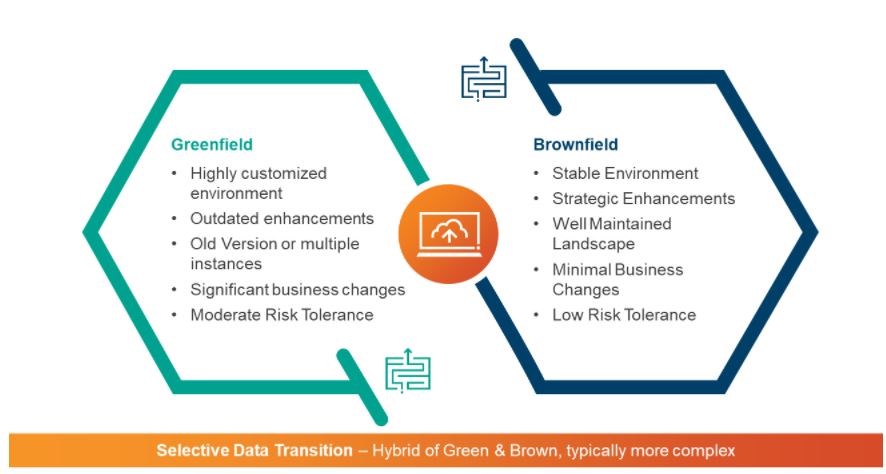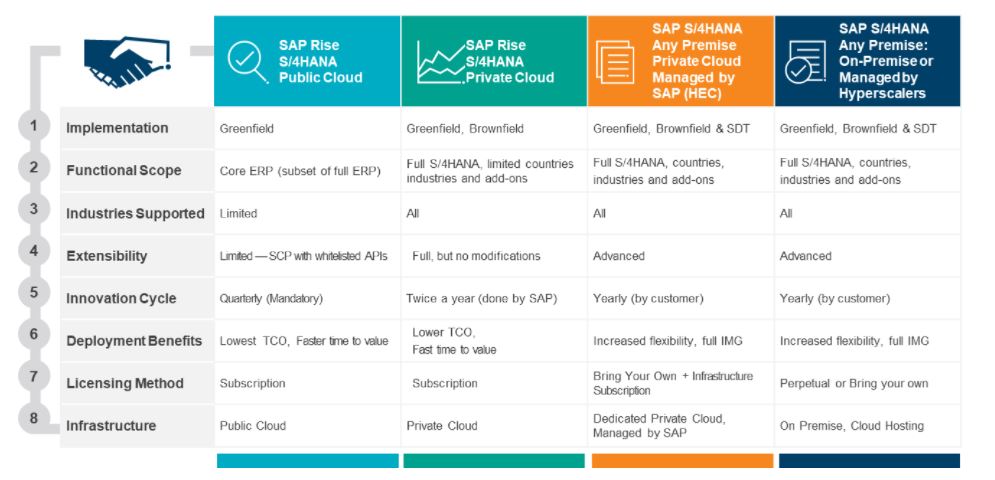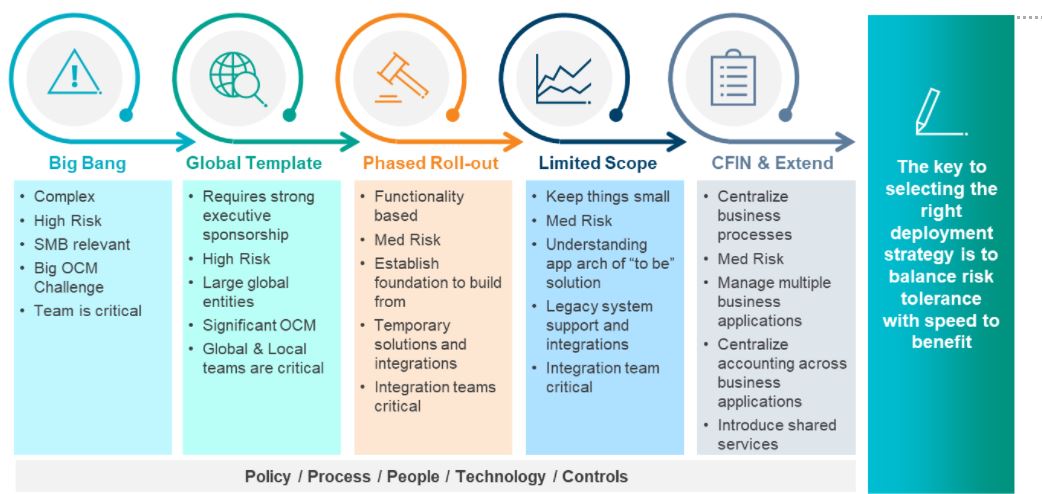As more companies begin to develop plans for their SAP S/4HANA journey, it is becoming evident that there are several decisions that need to be made to lay the groundwork for establishing an executable plan. With respect to implementation and deployment strategies, there are three critical decisions that must be made. These include:
- Nailing down the approach (e.g., greenfield, brownfield or selective data transition
- Deciding on the deployment strategy
- Determining how to implement and roll-out S/4HANA
Of course, each of these decisions require some background to make an informed choice. Here are our thoughts:
Nailing down the approach

The first decision is determining whether the organization will take a greenfield (new implementation) approach, a brownfield (system conversion) approach or a selective data transition or hybrid approach. The green and brownfield approaches are completely different paths to completing the S/4HANA journey.
Organizations that select a greenfield conversion are often moving from a highly customized environment that has likely become more complex over the years, to a simpler more standard environment. A greenfield implementation is typically model company or best practices driven. Here, we see data as being one of the critical components, even if the organization is moving from an older SAP solution. Data and data structures in S/4HANA change a bit, so there are considerations on what data to convert and whether the data structures align with future reporting needs.
A brownfield approach may be more appropriate for organizations that have much more stable environments. This would include organizations with strategic enhancements that are still working within very well-maintained landscapes, businesses that have stayed relatively consistent or with systems that have been managed well through change, or that simply have a low risk tolerance.
Lastly, the selective data transition approach, as the name implies, allows customers to bring over all existing customizations or a subset of customizations and enhance the system in other areas. This approach is a hybrid approach and has a fair amount of complexity, so we see fewer clients electing to go this route. In either of the last two scenarios, there is still a need to revisit master data, since S/4HANA has changes to some of the master data structures, e.g., GL account master data and business partners. There should also be consideration on whether to archive older or inactive data to reduce project risk.
Deciding on a deployment strategy

The second decision to nail down is how to deploy the SAP solution. As with the approach, there are several options here. The graphic above (adapted from an SAP image) helps to illustrate the various options companies can select, as well as the pros/cons of each option. Depending on the initial decision with respect to approach, there are relevant options. For example, electing a brownfield approach means SAP Public Cloud edition is not available. Similarly, a selective data transition is only available with one of the any premise license options. Each option has a unique set of pros and cons, so it is critical for the organization to understand the options, and to select the deployment strategy that will work best given their desired outcomes. In general, moving from left to right increases flexibility and system capabilities, but costs also increase in a move from a subscription-based model to a perpetual license model. This can influence the decision as companies look to move to a more operating expense-focused IT spend model.
Deciding how to implement and roll-out S/4HANA

The third key decision is to determine which implementation and roll-out strategy is best for the organization. We do not see many “big bang” deployments these days, as they are complex and high-risk, and most organizations select a more moderate path. Many organizations opt for strategies like establishing a global template and then rolling out by business unit or geography. Others choose a phased roll-out focused on getting the core functionality in and then expanding the functional footprint once they are live. Each of the implementation options meets a certain set of needs and risk tolerances, so it is critical for an organization to select the most appropriate fit.
Gaining clarity on, and building consensus around, these three key decisions at the beginning of the S/4HANA journey will help the organization set the guard rails that will guide the team during the program. These decisions will lay the foundation for planning and scoping and will help establish the path forward to achieve the desired future state. From this vantage point in the journey, it is then possible establish the program roadmap and determine what types of resources (people, budget, technology) are needed to support the organization, and which type of partner to engage to achieve a successful journey.
To learn more about our SAP capabilities, contact us or visit Protiviti’s SAP consulting services.






